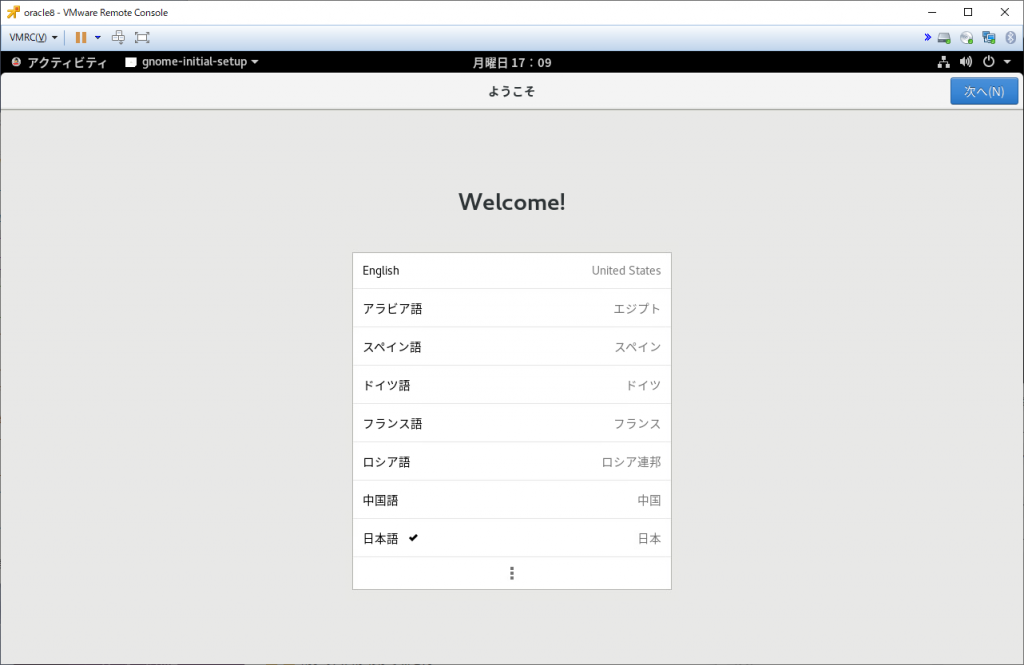samba 4.10.7へアップデートしたあと、「systemctl status samba-ad-dc.service」で出力されるログを見てみたら、微妙な感じのエラーがあった。
8月 29 08:54:02 adserver samba[107156]: [2019/08/29 08:54:02.287210, 0] ../../lib/util/util_runcmd.c:327(samba_runcmd_io_handler)
8月 29 08:54:02 adserver samba[107156]: /usr/local/samba/sbin/samba_dnsupdate: ImportError: No module named dns.resolver
8月 29 08:54:02 adserver samba[107156]: [2019/08/29 08:54:02.295161, 0] ../../source4/dsdb/dns/dns_update.c:331(dnsupdate_nameupdate_done)
8月 29 08:54:02 adserver samba[107156]: dnsupdate_nameupdate_done: Failed DNS update with exit code 1
8月 29 08:54:03 adserver winbindd[107159]: [2019/08/29 08:54:03.430795, 0] ../../source3/winbindd/winbindd_cache.c:3166(initialize_winbindd_cache)
8月 29 08:54:03 adserver winbindd[107159]: initialize_winbindd_cache: clearing cache and re-creating with version number 2
8月 29 08:54:03 adserver smbd[107151]: [2019/08/29 08:54:03.438943, 0] ../../lib/util/become_daemon.c:136(daemon_ready)
8月 29 08:54:03 adserver smbd[107151]: daemon_ready: daemon 'smbd' finished starting up and ready to serve connections
8月 29 08:54:03 adserver winbindd[107159]: [2019/08/29 08:54:03.454411, 0] ../../lib/util/become_daemon.c:136(daemon_ready)
8月 29 08:54:03 adserver winbindd[107159]: daemon_ready: daemon 'winbindd' finished starting up and ready to serve connections
「samba_dnsupdate: ImportError: No module named dns.resolver」の対応
現状の確認方法
[root@adserver ~]# samba_dnsupdate --verbose
Traceback (most recent call last):
File "/usr/local/samba/sbin/samba_dnsupdate", line 57, in <module>
import dns.resolver
ImportError: No module named dns.resolver
[root@adserver ~]#
原因はpythonのDNS toolkitがインストールされていないこと。
CentOS7環境で対処するには「yum search dnspython」を実行してモジュール名を確認
[root@adserver ~]# yum search dnspython
読み込んだプラグイン:fastestmirror
Determining fastest mirrors
* base: ftp.riken.jp
* epel: ftp.riken.jp
* extras: ftp.riken.jp
* updates: ftp.riken.jp
=============================== 一致: dnspython ================================
python-dns.noarch : DNS toolkit for Python
python36-dns.noarch : DNS toolkit for Python 3
[root@adserver ~]#
今回使っている環境はpython 2環境なので、「yum install python-dns」でインストール。
[root@adserver ~]# yum install python-dns.noarch
読み込んだプラグイン:fastestmirror
Loading mirror speeds from cached hostfile
epel/x86_64/metalink | 7.3 kB 00:00
* base: ftp.riken.jp
* epel: ftp.riken.jp
* extras: ftp.riken.jp
* updates: ftp.riken.jp
base | 3.6 kB 00:00
epel | 5.4 kB 00:00
extras | 3.4 kB 00:00
packages-microsoft-com-prod | 2.9 kB 00:00
updates | 3.4 kB 00:00
(1/3): epel/x86_64/updateinfo | 998 kB 00:02
(2/3): packages-microsoft-com-prod/primary_db | 200 kB 00:00
(3/3): epel/x86_64/primary_db | 6.8 MB 00:03
依存性の解決をしています
--> トランザクションの確認を実行しています。
---> パッケージ python-dns.noarch 0:1.12.0-4.20150617git465785f.el7 を インスト ール
--> 依存性解決を終了しました。
依存性を解決しました
================================================================================
Package アーキテクチャー
バージョン リポジトリー
容量
================================================================================
インストール中:
python-dns noarch 1.12.0-4.20150617git465785f.el7 base 233 k
トランザクションの要約
================================================================================
インストール 1 パッケージ
総ダウンロード容量: 233 k
インストール容量: 1.0 M
Is this ok [y/d/N]: y
Downloading packages:
python-dns-1.12.0-4.20150617git465785f.el7.noarch.rpm | 233 kB 00:00
Running transaction check
Running transaction test
Transaction test succeeded
Running transaction
インストール中 : python-dns-1.12.0-4.20150617git465785f.el7.no 1/1
検証中 : python-dns-1.12.0-4.20150617git465785f.el7.no 1/1
インストール:
python-dns.noarch 0:1.12.0-4.20150617git465785f.el7
完了しました!
[root@adserver ~]#
動作確認・・・
[root@adserver ~]# samba_dnsupdate --verbose
IPs: ['172.17.44.49']
Looking for DNS entry A adserver.adosakana.local 172.17.44.49 as adserver.adosakana.local.
Looking for DNS entry NS adosakana.local adserver.adosakana.local as adosakana.local
<略>
Checking 0 100 389 adserver.adosakana.local. against SRV _ldap._tcp.Default-First-Site-Name._sites.ForestDnsZones.adosakana.local adserver.adosakana.local 389
No DNS updates needed
[root@adserver ~]#
それ以外のログについて
samba_dnsupdateに関するエラーについて対処した後、sambaを再起動してログを見てみると、下記の様な感じになっていた。
8月 29 09:06:46 adserver samba[107294]: [2019/08/29 09:06:46.991243, 0] ../../source4/smbd/server.c:773(binary_smbd_main)
8月 29 09:06:46 adserver samba[107294]: binary_smbd_main: samba: using 'standard' process model
8月 29 09:06:47 adserver samba[107294]: [2019/08/29 09:06:47.021548, 0] ../../lib/util/become_daemon.c:136(daemon_ready)
8月 29 09:06:47 adserver samba[107294]: daemon_ready: daemon 'samba' finished starting up and ready to serve connections
8月 29 09:06:49 adserver winbindd[107312]: [2019/08/29 09:06:49.157089, 0] ../../source3/winbindd/winbindd_cache.c:3166(initialize_winbindd_cache)
8月 29 09:06:49 adserver winbindd[107312]: initialize_winbindd_cache: clearing cache and re-creating with version number 2
8月 29 09:06:49 adserver winbindd[107312]: [2019/08/29 09:06:49.266323, 0] ../../lib/util/become_daemon.c:136(daemon_ready)
8月 29 09:06:49 adserver winbindd[107312]: daemon_ready: daemon 'winbindd' finished starting up and ready to serve connections
8月 29 09:06:50 adserver smbd[107311]: [2019/08/29 09:06:50.436561, 0] ../../lib/util/become_daemon.c:136(daemon_ready)
8月 29 09:06:50 adserver smbd[107311]: daemon_ready: daemon 'smbd' finished starting up and ready to serve connections
RHEL7だと上記出力を赤文字で出力してるけど、内容を見る限りではinformation的なものであるので、特に対処する必要はなさそうである。









